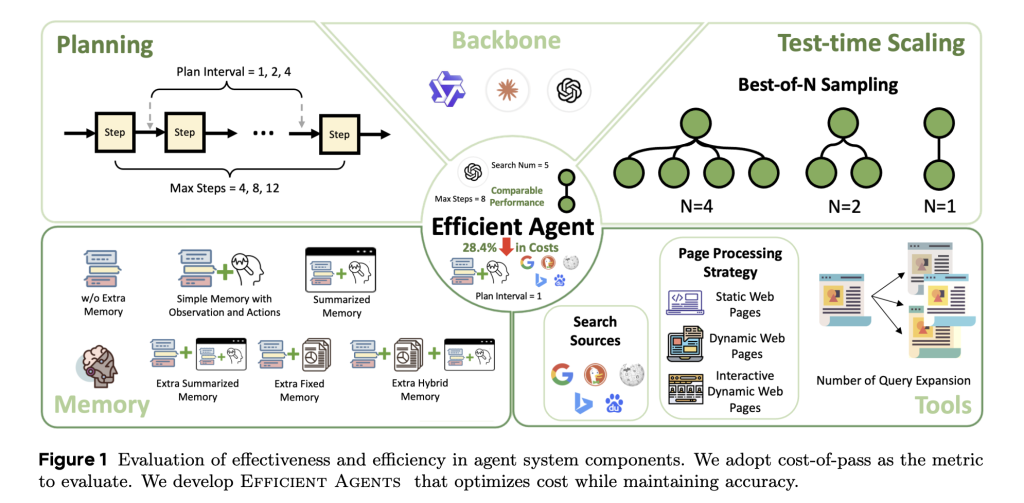Are AI agents getting too expensive to use at scale? It’s a hot topic in the world of artificial intelligence, and a fresh study from the OPPO AI Agent Team finally puts some real numbers—and solutions—on the table.
Today’s most impressive AI agents can tackle massive, multi-step tasks using the reasoning power of large language models (LLMs) like GPT-4 and Claude. But with every breakthrough, the price to run these systems has shot up, making it tough for businesses (and even researchers!) to deploy them broadly. Enter the “Efficient Agents” framework—a new recipe for agent systems that keeps nearly all the performance but dramatically cuts the cost.
The Real Problem: AI Agents Are Getting Pricey
Ever wondered why your favorite smart AI assistant hasn’t taken over every aspect of your workflow yet? It’s not just the tech—it’s the bill. Some cutting-edge agent systems need hundreds of API calls per task. Multiply that by thousands of users and, suddenly, “scalability” seems more like a pipe dream.
The OPPO team saw this coming. Their latest study systematically breaks down where agents rack up costs and, more importantly, how much complexity is really needed to solve everyday tasks.
The Game-Changer: Measuring AI Agent Efficiency
This research introduces a crystal-clear metric: cost-of-pass. Imagine it as “the total cost to generate a correct answer to a problem.” It factors in how much you pay for tokens (every word in and out of your model) and how good the model is at getting things right on the first try.
Here’s the punchline: High-performing models like Claude 3.7 Sonnet top the leaderboards on accuracy, but their cost-of-pass is three to four times higher than that of GPT-4.1. For simpler jobs, smaller models like Qwen3-30B-A3B do a little less but cost pennies in comparison.

The Big Experiments: What Makes Agents Expensive?
1. Backbone Model Choice
Claude 3.7 Sonnet nails 61.82% accuracy on a tough benchmark but costs $3.54 per successful task. GPT-4.1 drops a bit in accuracy (53.33%) but only costs $0.98. Want barebones, fast-and-cheap results? Qwen3 shrinks costs to $0.13 for basic tasks.
2. Planning and Scaling
You’d think “more planning” means “better results.” Not so fast. Too many steps equals higher cost, but not much boost in success rate. Scaling tricks that let the agent try more options (Best-of-N) burn lots of compute for tiny jumps in accuracy.
3. How Agents Use Tools
Agents can use browsers, search engines, and other tools to get fresh info. More search sources help up to a point, but fancy moves like page-up/page-down add cost without much payback. Keeping tool use simple and broad works best.
4. Agent Memory
Surprisingly, the simplest memory setup—just keeping track of actions and observations—gave the best balance of low cost and high effectiveness. Extra memory modules made agents slower and more expensive, for little gain.
Putting It All Together: The “Efficient Agents” Blueprint
Here’s how the Efficient Agents system cracks the code:
- Use a smart but not overly expensive model (GPT-4.1).Limit its steps to avoid endless “overthinking.”Search broadly (mix in Google, Wikipedia, and other sources), but don’t go heavy with crazy browser actions.Keep memory lean and simple.
The result? Efficient Agents deliver 96.7% the performance of top open-source competitors (like OWL), but at less than three-quarters the cost! That’s a 28.4% drop in the bill, without sacrificing results.
Why This Matters
This research is a wake-up call: Smart AI isn’t just about being powerful—it’s about being practical. If you’re building or deploying agents, measure your cost-of-pass and pick your ingredients wisely. Don’t assume bigger is always better. Sometimes, simple wins.
The Efficient Agents framework is open-source, so you can start experimenting with these ideas right now. As AI becomes more pervasive, efficient design will be key—whether you’re rolling out agents at a startup or a Fortune 500 company.
Bottom line: Next-gen AI agents can be both smart and affordable if you’re willing to rethink how you build them. The Efficient Agents paper isn’t just another technical deep-dive—it’s a roadmap for making AI work everywhere. And who doesn’t want that?
Check out the Paper and GitHub Page. Also, feel free to follow us on Twitter and don’t forget to join our 100k+ ML SubReddit and Subscribe to our Newsletter.
The post Efficient AI Agents Don’t Have to Be Expensive: Here’s Proof appeared first on MarkTechPost.

 Star us on GitHub
Star us on GitHub Sponsorship Details
Sponsorship Details